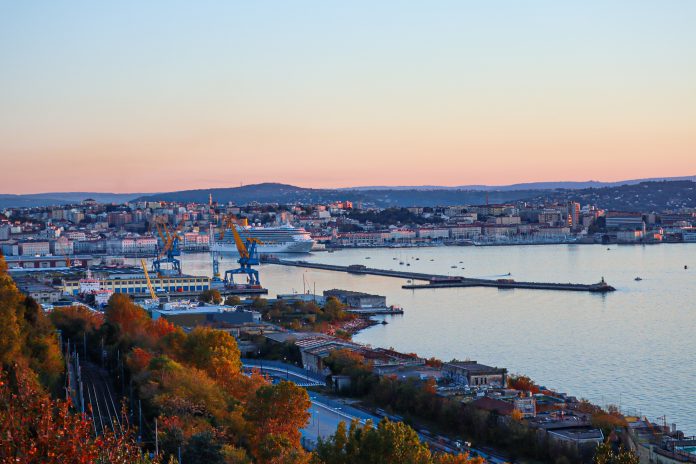by InTrieste
The historic Port of Trieste, already a cornerstone of Italy’s shipping industry, is preparing for a major expansion thanks to the green light on $200 million in public funding from Italy’s Interministerial Committee for Economic Planning and Sustainable Development (CIPESS). The funding will go toward the development of a new container terminal at Pier VIII, aiming to transform Trieste’s role in global logistics between Europe, the Mediterranean, and the Far East.
The ambitious project marks a significant step forward for the port, as the additional terminal capacity could make Trieste a primary gateway for goods entering Central Europe. The expansion also solidifies the port’s position in the Upper Adriatic, opening up new economic and trade routes with the potential to impact regional and international commerce.
Regional Governor Massimiliano Fedriga expressed gratitude for the project, extending special thanks to Italian Minister of Transport Matteo Salvini, who he credited for recognizing the “strategic importance” of the port. Fedriga noted that the project does more than acknowledge Trieste’s role; it amplifies it, positioning the port to compete on a larger scale with major global logistics hubs.
Beyond the substantial public funding, private investment will contribute further to the project’s design, construction, and long-term maintenance, signaling robust public-private collaboration. Fedriga highlighted the economic benefits this partnership will bring, especially for the local workforce. “The public-private investment will generate employment opportunities both during the construction phase and once the terminal is operational, boosting freight traffic and supporting the logistics ecosystem,” he said.
This expansion is projected to strengthen the Port of Trieste’s long-standing role within the Eastern Adriatic Sea Port System Authority, the entity managing several key ports in the region. Experts believe the added capacity will allow for greater cargo volumes and the seamless integration of Trieste within the continent’s primary trade networks.
The project is likely to have a significant impact on Friuli Venezia Giulia, the northeastern Italian region home to Trieste. According to Fedriga, the initiative will generate both direct and indirect employment for hundreds, if not thousands, across multiple sectors. “Trieste and Friuli Venezia Giulia are adding a vital element to Central Europe’s logistics platform,” he said, “and placing our region on the international economic map in a meaningful way.”
For Trieste, which has seen trade volumes steadily increase in recent years, this investment underscores its strategic role at a time when supply chains are more interconnected than ever. As Italy’s economic and trade policies align with global logistics trends, the new Pier VIII terminal could signal a new era for Trieste, poised to serve as one of the most vital maritime nodes connecting Europe to Asia.





























